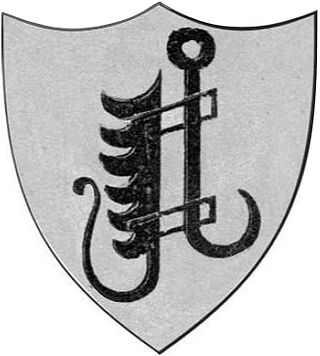


Count [1] Georg Friedrich Armand von der Decken (5 October 1836 in Braunschweig - 19 August 1898 in Salzgitter-Ringelheim) was owner of Castle Ringelheim and a member of the German Reichstag.



Count [1] Georg Friedrich Armand von der Decken (5 October 1836 in Braunschweig - 19 August 1898 in Salzgitter-Ringelheim) was owner of Castle Ringelheim and a member of the German Reichstag.
Decken was the son of Count Adolphus von der Decken and Louise von Wallmoden. He married in 1866 in Schlobitten Marie zu Dohna-Schlodien. She grew up in Mallmitz in Silesia. The couple had five children. [2]
Before 1890 count von der Decken was attaché at the Hanoverian Embassy in Paris. Here he had the opportunity to deepen his technic in painting.
He was party leader of the German-Hanoverian Party since 1890 and distinguished as a political opponent of Otto von Bismarck and the Prussian supremacy in the German Reich.
From 1890 until his death he was a member of the German Parliament for the Province of Hanover.
He was highly musical, painted large-scale oil paintings and created wooden sculptures. His motives were in accordance with the prevailing taste, romantic landscapes and figures from Greek heroic legend. In the church of Ringelheim there are still his oil paintings: the altar piece and the twelve disciples of Christ in life-size. [3]

Gottlieb Ferdinand Albert Alexis Graf von Haeseler was a German military officer of the Imperial Wilhelmine period, with final rank of Generalfeldmarschall.

Friedrich Wilhelm Freiherr von Bülow, Graf von Dennewitz was a Prussian general of the Napoleonic Wars.

Wolf Heinrich Friedrich Karl Graf von Baudissin was a German diplomat, writer, and translator.

Peter Graf Yorck von Wartenburg was a German jurist and a member of the German Resistance against Nazism. He studied law and politics in Bonn and Breslau from 1923 to 1926, gaining his doctorate in Breslau in 1927 and passing the civil service entrance examination for lawyers in Berlin in 1930. He married Marion Winter that same year.

Friedrich Emil Ferdinand Heinrich von Kleist, granted the title Graf Kleist von Nollendorf from 1814 onwards, was a Prussian field marshal and a member of the old junker family von Kleist. He was a prominent figure in Prussian military during the Napoleonic Wars.

Heinrich Burggraf und Graf zu Dohna-Schlobitten was a German major general and resistance fighter in the 20 July Plot to assassinate Adolf Hitler at the Wolf's Lair in East Prussia. He was a Knight of Justice of the Order of St John, which was regarded with disfavour by the Nazis.
Countess Nina von Stauffenberg was the wife of Colonel Claus Schenk Graf von Stauffenberg, the leader of the failed plot to assassinate Adolf Hitler on 20 July 1944. Following the plot's failure, she was arrested and imprisoned, during which time she delivered her youngest child.
Count Ludwig Joseph von Boos-Waldeck was a German noble who promoted the settling of Texas by Germans.

Wilhelm Graf von Hohenau was a German Graf and horse rider who competed in the 1912 Summer Olympics.

Bogislav Friedrich Emanuel Graf Tauentzien von Wittenberg was a Prussian general of the Napoleonic Wars.

Botho Prinz zu Sayn-Wittgenstein-Hohenstein was a German politician. He was a member of the Christian Democratic Union and represented the party in the Bundestag from 1965 to 1980. He first gained a direct mandate as representative of Siegen-Wittgenstein and subsequently was elected from the land list.

Heinrich Graf von Einsiedel was a German journalist, politician and World War II Luftwaffe ace.
Eva Gräfin Finck von Finckenstein was a German politician, representative of the German Christian Democratic Union.

Nikolaus Burggraf und Graf zu Dohna-Schlodien was a German naval officer and author.

Alexander Burggraf und Graf zu Dohna-Schlobitten was a Prussian field marshal and diplomat.

Michael Graf von Matuschka was a German politician who took part in the 20 July plot.

Graf Johann Friedrich von der Decken was a Hanoverian general and diplomat during the Napoleonic Wars.

Günther Emanuel Graf von Kirchbach was a German Generaloberst who served during the First World War.

The House von der Decken is the name of an old Hanoverian family of German nobility. Since more than 750 years the center of the family is in a part of Lower Saxony at the south bank of the river Elbe called Kehdingen.

Count Albrecht Friedrich Wilhelm Bernhard of Hohenau was a German nobleman.